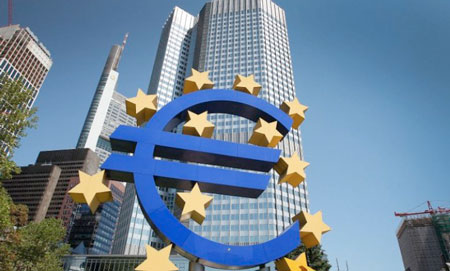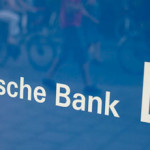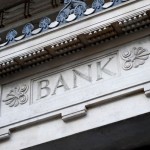ECB Says Leverage Ratio Makes Banks More Stable

Lenders have raised concerns new standard could prompt them to take more risk, offsetting benefits
The European Central Bank said Monday that a leverage ratio requirement may tempt some banks to take more risk, but will still make them more stable by increasing their capacity to absorb losses.
In a new note on financial stability, the European regulator also showed that the stabilizing impact of a leverage ratio on banks is high for banks with low loss-absorbing buffers, but decreases as banks become better capitalized. This could be a glimmer of hope for banks who fear regulators want to keep increasing capital demands indefinitely.
After the financial crisis, international banking regulators in Basel, Switzerland, came up with the leverage ratio as an extra capital requirement for banks to constrain the buildup of too much leverage and make banks more stable. In Europe, the new metric is scheduled to come into force in 2018.
Since the leverage ratio isn’t risk-based, unlike the risk-weighted capital ratio that has dominated bank earnings reports in recent years, banks have raised concerns the new standard could prompt them to take more risk, offsetting its benefits.
To put those concerns to rest, the ECB studied the histories of over 500 European Union banks, giving special attention to bankruptcies, state aid or other episodes of distress. On Monday, it said it found proof that the leverage ratio predicts the chance of trouble for a bank very well: a bank with a one percentage-point higher leverage ratio had nearly 40% less chance to become distressed.
The central bankers acknowledged that a low-risk profile bank, being hit by high leverage ratio requirements, could freely take on more risk as this wouldn’t increase its capital cost, but only to a certain point. Beyond that, the free lunch would stop, as the risk-weighted capital requirement would start weighing in again.
And there is another reason why banks would remain cautious, the ECB argued. Banks would have more “skin in the game” because of the leverage ratio, which would make them less likely to risk it all on the higher returns of riskier assets.
An important added benefit of the simple, nonrisk-based leverage ratio for regulators is that it can ease issues around the manipulation of risk-weighted assets, the ECB said, referring to recent evidence that banks deliberately “gamed” the system to minimize their capital requirements.
Many banks have shown they will go to great lengths to minimize their capital requirements, as it increases profitability for shareholders. A higher leverage ratio reduces the headroom for banks to use extra debt to make higher returns.
Interestingly, the ECB also showed when leverage ratios are most effective in making banks more stable. A 4% level may turn out to be the most effective, as it strongly improves the chances for banks to stay out of trouble, according to the ECB’s statistics. Raising the bar to 5% or higher would add less additional stability, the historical evidence showed.
The central bank is currently testing a minimum level of 3% of total exposure as the leverage ratio requirement for European banks. Still, the regulator may be considering raising the bar to 4% or even 5%, as some European countries with large financial institutions have done, such as the U.K., the Netherlands and Switzerland.
Source: WSJ – ECB Says Leverage Ratio Makes Banks More Stable





























